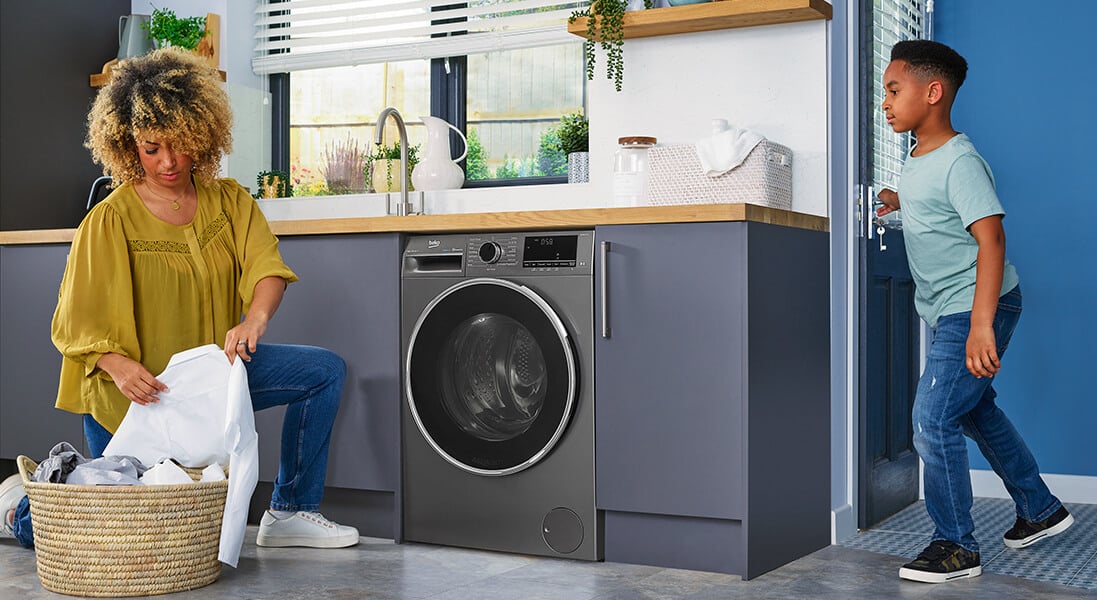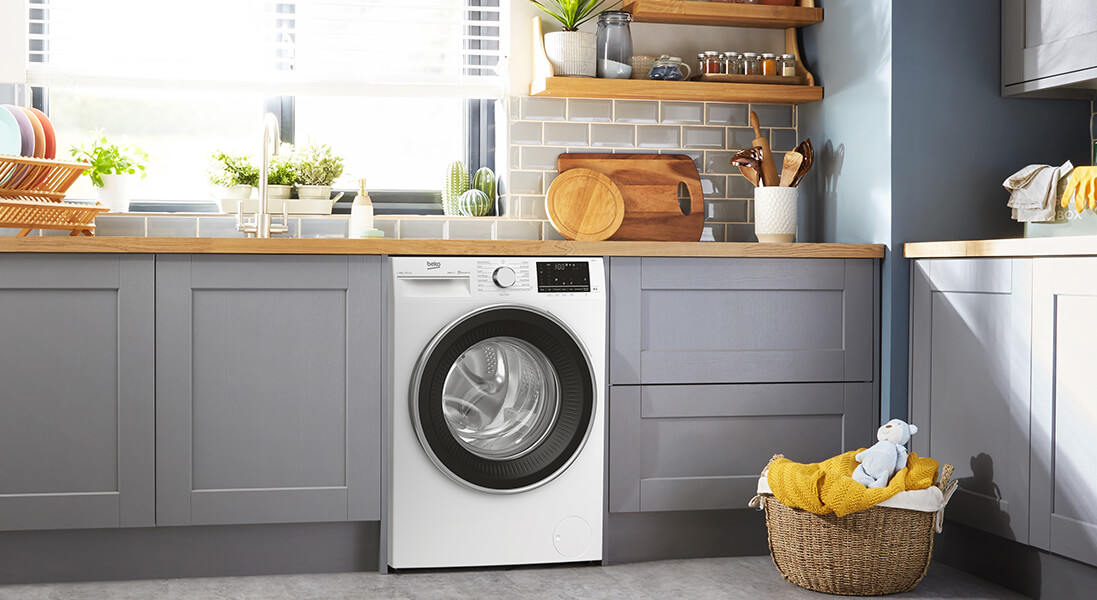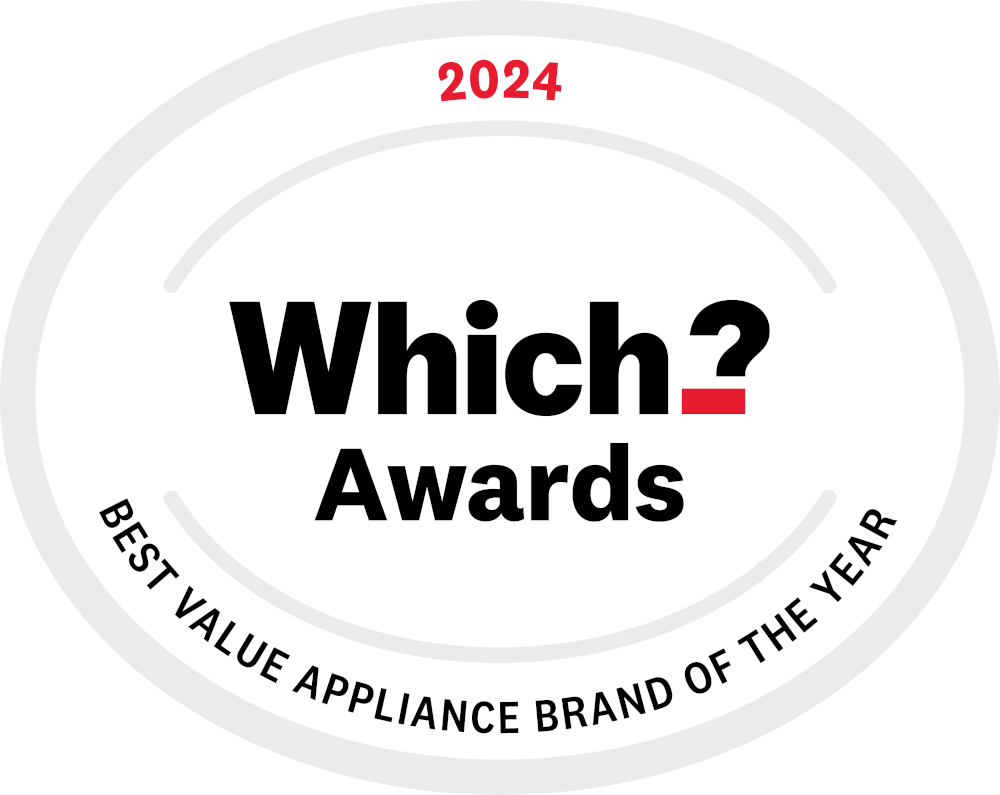What do washing machine energy ratings mean?
When it comes to household white goods, understanding energy ratings is crucial for assessing the efficiency of appliances, like washing machines, fridges, and tumble dryers. Whether you're in the market for a new appliance or simply calculating your energy consumption, these ratings offer valuable insights into your kitchen's efficiency and can potentially help you save money on utility bills.

How can I find out my washing machine's energy rating?
To find your washing machine's energy rating, follow these simple steps:
- Check the polybag containing the instruction manual for the energy rating label.
- All labels feature an alphabetical rating system providing a concise overview of the machine's energy efficiency.
- If you have a washer dryer, you'll find two energy ratings—one for washing and another for drying - on the same label enclosed within the polybag.
What is the point of washing machine energy rating labels?
A washing machine's energy rating is vital for anyone looking to buy a new, more energy-efficient model.
The energy consumption shown on the label is based on 100 wash cycles of the Eco 40-60 programme and considers different load sizes, including full, half, and quarter loads. This means the energy label reflects a weighted average consumption across these various load sizes and programme settings, rather than solely the consumption for a full load.

When did energy rating labels change?
The energy rating labels changed in March 2021, transitioning from the old scale (A+++ to D) to a newer one (A to G). Both scales highlight the energy efficiency of your machine, with green indicating the most energy-efficient machines and red representing the least efficient. If you own an older washing machine, this might have the A+++ to D rating, whereas newer models will use the A to G design. To learn more about the introduction of the new energy rating labels and the reasons behind the change, please click here.
Is my washing machine energy efficient?
Determining the energy efficiency of your washing machine is easy with the energy rating label. More efficient models will have higher ratings on the colour-graded energy label, particularly those in the A range. Models with a higher rating are the most efficient options, whereas machines with lower energy ratings may incur higher costs than necessary.
In addition to the rating, it is also important to consider your washing machine's efficiency in terms of usage. Factors like overfilling the drum, for example, can contribute to wear and reduce your machine's efficiency over time. To learn how to get the most out of your washing machine, view our top tips on how to use your washing machine more effectively.
How much water does a washing machine use?
The water usage of a washing machine will vary depending on factors. These include size, programme selection, water softness, laundry load, full load capacity, energy class, and machine age. For more specific information, please refer to your appliance's manual.
How much energy does my washing machine use?
How much energy your washing machine uses depends on its energy rating and capacity. A higher rating means it's more efficient. To calculate how much energy your washing machine uses, please check your instruction manual where you can find the energy consumption of the most used programmes on your machine.

How much does it cost to run a washing machine?
The cost of running a washing machine also changes depending on the size, efficiency, and model. For individual units, it can cost anywhere from 10p to 36p to run per load. If you are interested in learning how much it costs to run a washing machine, it's worth checking your instruction manual as this will provide more information regarding the energy consumption of your appliance.
Why is a washing machine's energy rating important and what are the environmental impacts of washing machines?
One reason your washing machine's energy rating label is important is to inform and influence your impact on the environment. By knowing how much water and energy you're using per cycle, you can better improve your laundry practices.
How are energy ratings determined?
Energy ratings are determined through 100 wash cycles of the Eco 40-60 program, considering various load sizes. This assessment does not consider under- or over-utilisation of the appliance. The energy label reflects a weighted average consumption across different load sizes and programme settings, rather than solely the consumption for a full load. Machines are then assigned a rating on a scale from "A" (most efficient) to "G" (least efficient).
Washing machine energy A rating
"A"-rated washing machines are the most efficient models available. These machines use the least amount of water and energy to operate, surpassing even the older models with A+++ ratings in terms of efficiency.
Washing machine energy B rating
While not reaching the same level of efficiency as an "A" rating, a "B" rating on your washing machine's energy label is still beneficial. It represents a good balance between efficiency and affordability for many customers. Importantly, a "B" rating is equivalent to the old A+++ rating, offering considerable energy savings compared to lower-rated models.
Washing machine energy C rating
This rating can also equate to older models with an A+++ rating. It represents a moderately efficient model, though not the most efficient available. These models typically use an average amount of water and energy to operate.
Washing machine energy D rating
While a "D" rating isn't the least efficient, it does indicate room for improvement in energy and water usage. Transitioning from a "D" to an "A" rating can lead to significant savings in terms of both energy and water consumption, ultimately saving you money in the long run.
Understanding the efficiency of your washing machine involves considerations of water usage, energy consumption, and overall cost. Higher energy ratings lead to more efficient machines, contributing to both environmental and economic savings. If you're ready to make a change and invest in a new, energy-efficient machine, explore our diverse range of washing machines here.
Did we answer your question?
We are so sorry we were unable to answer your question. You might be able to find the answer you are looking for in the ‘Related Questions’ below. If your query is still unanswered, please head over to our Contact Us page for further assistance.
Search FAQ’s
Search or browse our frequently asked questions to find the answer to your query.



